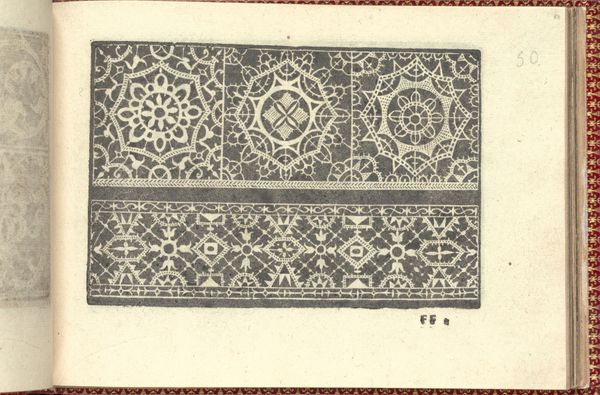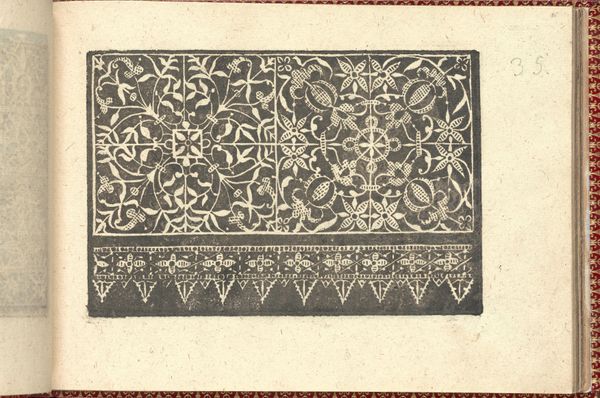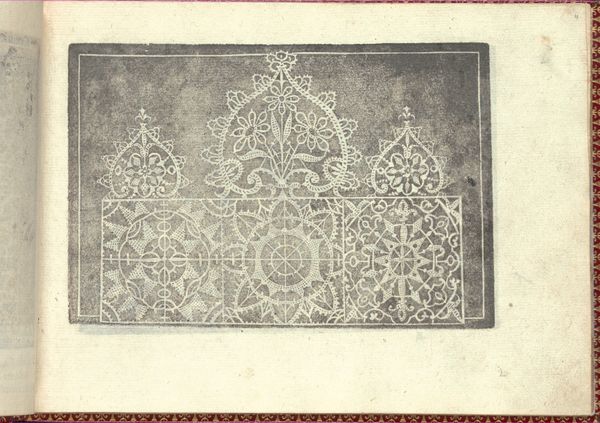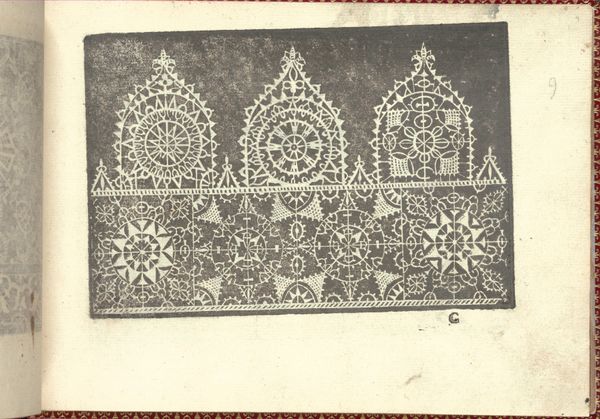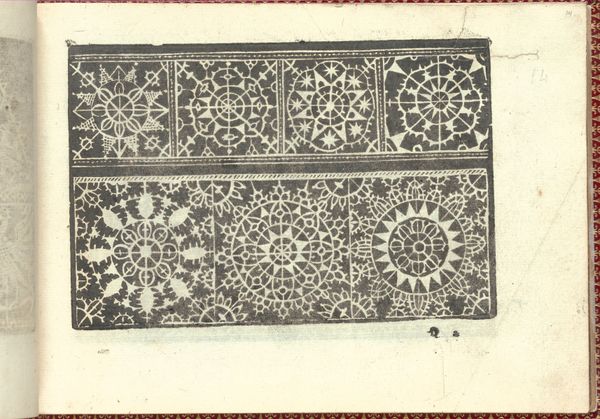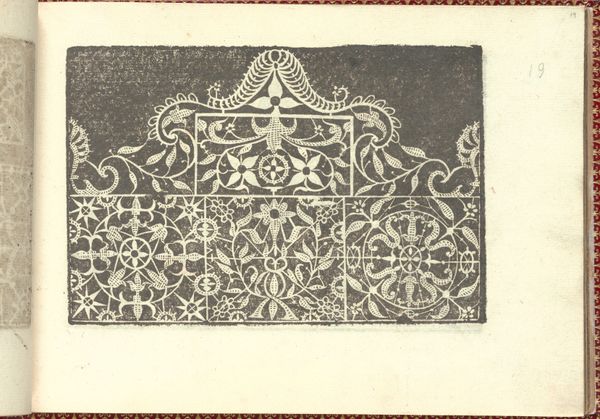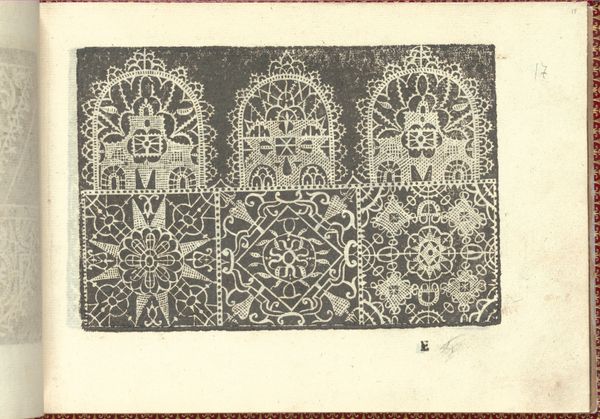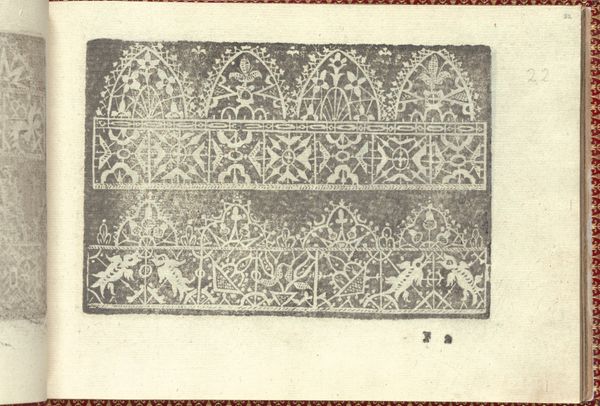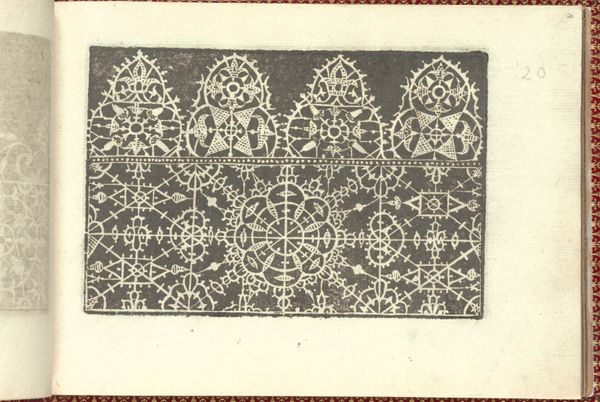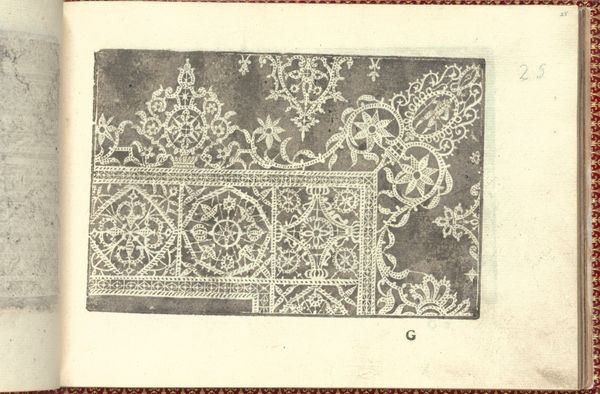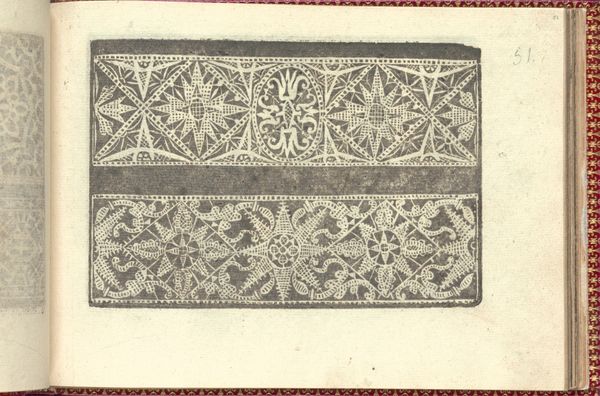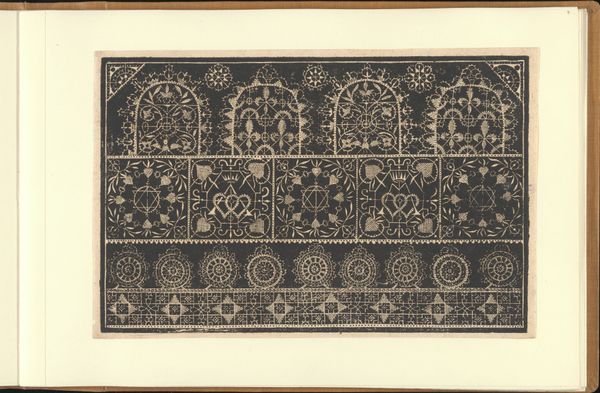
Corona delle Nobili et Virtuose Donne: Libro I-IV, page 47 (recto) 1601
0:00
0:00
drawing, graphic-art, ornament, print, ink
#
drawing
#
graphic-art
#
ornament
#
toned paper
# print
#
book
#
sketch book
#
11_renaissance
#
ink
#
pen work
#
decorative-art
#
italian-renaissance
Dimensions: Overall: 5 1/2 x 7 11/16 in. (14 x 19.5 cm)
Copyright: Public Domain
Curator: This is a page from Cesare Vecellio’s "Corona delle Nobili et Virtuose Donne," a pattern book from 1601, residing now at the Metropolitan Museum. We see the recto, or the front side of page 47 from Book I-IV of his Corona. The media involves a marriage of drawing, print, and graphic arts on toned paper using ink—mostly pen work. Editor: My initial reaction? It's incredibly delicate. It feels almost ephemeral, like seeing lace floating just above the page. And those shapes – repetitive, precise. Was this meant for pure decoration or something more practical? Curator: Definitely practical! Vecellio's "Corona" served as a design source book specifically intended for lacemakers and other artisans of the era. Think of it as a catalogue, really, showcasing different patterns that could be replicated and adapted. Its place of material production is clear. Editor: Ah, a commercial venture as much as an artistic one! Looking at the repeating motifs, the careful grid structure... you can imagine women—mainly women, right?—bent over their work, painstakingly translating these drawings into real fabric. There’s a collaboration happening, a slow conversation across skillsets. It moves beyond the design on the page, no? Curator: Precisely. And that labor has value—a tangible economic and social value beyond just the aesthetic appeal. It reminds us that even so-called “decorative” arts play a crucial role in the cultural and economic landscape of the time. These “virtuous women" weren't just decorating; they were creating and consuming value. Editor: You know, the grey tone of the paper almost makes it feel like a modern photocopy. Of course, it isn’t… but that flat plane behind the intricate line work creates a peculiar tension between old and new, the unique and the reproducible, that speaks across time. I find the limitations of that duality engaging for modern sensibilities. Curator: Absolutely, and seeing it within the book itself is so important. The context provides so much texture to the work—especially when we discuss value and the exchange between artist, maker and material good. Editor: Right. These delicate lines weren’t just meant to be admired behind glass. They were meant to become. Food for creative thought, and literal industry. Thanks for expanding my view of it today. Curator: A mutual benefit, indeed. It's a welcome shift to acknowledge not just beauty but production of culture in that era.
Comments
No comments
Be the first to comment and join the conversation on the ultimate creative platform.
